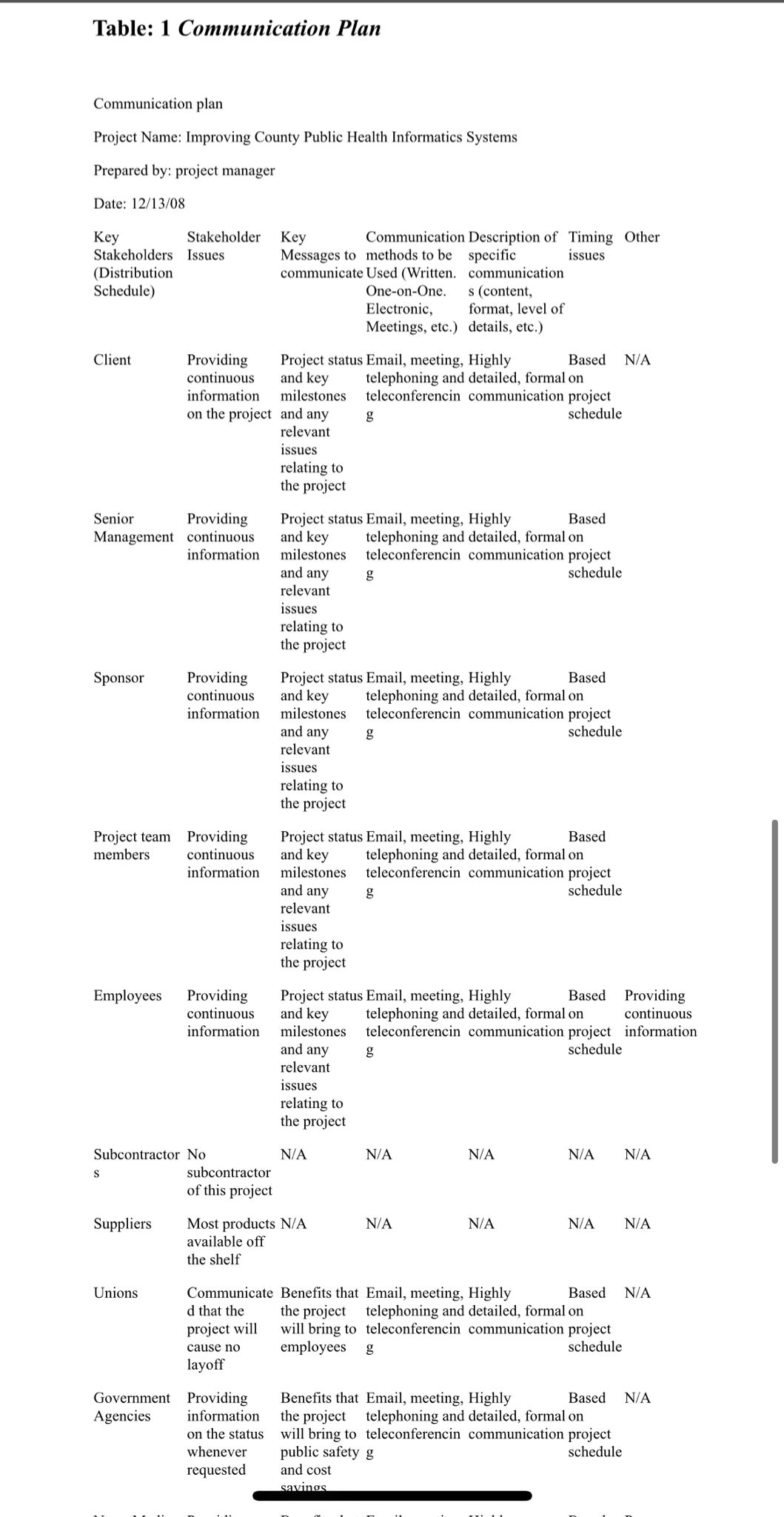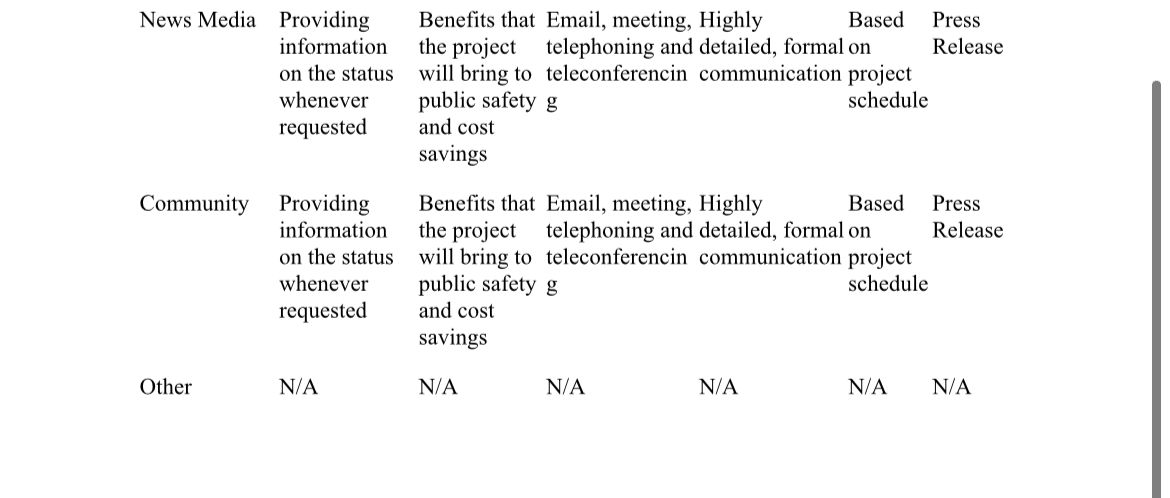Question
Appendix A - Case Study #3 - Improving Public Health Informatics (Source: Milosevic, D. Z., Patanakul, P., & Srivannaboon, S. (2011). Case studies in project,
Appendix A - Case Study #3 - Improving Public Health Informatics
(Source: Milosevic, D. Z., Patanakul, P., & Srivannaboon, S. (2011). Case studies in project, program, and organizational project management. Hoboken, NJ: John Wiley & Sons, Inc.)
By Abdi Mousar
In the event of a major disease outbreak, senior managers need to respond in a timely fashion. To be able to do so, one needs to have all the latest information and data to make an appropriate decision. The County Health Department (CHD)'s strategic plan specific es increasing capacities for the program evaluation and response to major communicable disease outbreaks. Senior managers have identified ed the need to improve informatics capacity as an important step toward meeting these goals. Currently, each community health services program of CHD has information systems that effectively track specific information for their assigned work. However, the systems were designed reactively without considering future expansions or an updated public health data plan. Each data base is almost a standalone system. While the state data bases are linked to CHD's data bases, the environmental data bases are not linked with communicable disease data bases. Representatives from the Tuberculosis (TB) program, for example, had to enter identical client information in four different places. Moreover, the state mandates the public health department report the health conditions of its citizens and control infectious diseases. In order for this to happen, one needs informatics systems that are capable of tracking infectious diseases and reporting all investigations in a timely manner. While the benefits of an integrated data base stand out, most employees in CHD are reluctant to change, particularly with regard to adopting and using a new technology as evidenced by the implementations of the EMR systems and other specifically designed data bases. To ensure success of the implementation, the project manager must provide relevant information to the stakeholders on a regular basis. This case focuses on project communication management, especially within the communication plan.
The Big Project
It all began when a new epidemiologist, hired by CHD, articulated the need to have an integrated public health informatics system. With the new system, the reporting of infectious diseases as well as possible future outbreaks could be done in a timely fashion. The decision makers can then make an appropriate decision.
The communicable disease section of the county health department has taken the lead in championing this project. The team includes two IT engineers and the epidemiologist, who will be overseeing the project. The team is responsible for gathering business processes and information system requirements, working closely with stakeholders, and at the same time, training IT engineers using the best practices developed by the Public Health Informatics Institute (PHII).
The project duration is expected to be from six to twelve months and the team will provide monthly updates as well as ad hoc updates whenever specific information is needed by the stakeholders.
The team has extensive experience in working together on previous successful projects such as the EMR implementation, EPIC implementation, and the communicable disease data bases' statewide expansion. It is the team' s firm belief that this project, to integrate a variety of data bases into a system that can communicate to one another, is doable.
PM: The initial idea of this project was formulated several years ago but it did not get the support it needed. Now we are bringing it back to life. And I know that you guys (IT engineers) are in favor of it and are ready to take the lead in this, with interoperability and data sharing in mind, while at the same time conforming to Public Health Informatics Institute' s best practices.
Dan: Correct. However, I am wondering who is going to fund this project as the health department is struggling and currently lacks the necessary resources.
PM: There is a grant from the Robert Wood Johnson Foundation (RWJF) which is affiliated with the Public Health Informatics Institute who specifically funds the struggling local health department' s public health information systems to meet their daily operational needs. I am going to put together the grant proposal and I need inputs from you guys.
Tim: Let me know what you need.
Dan: Do we have full support of the department leadership this time?
PM: Yes, this time we have the absolute support of the entire leadership team. However, we have to make sure that we keep them updated with project status. In fact, learning from past projects, communication is very important for system implementation. We have to make sure that we communicate well with all project stakeholders.
Tim: I agree. But all stakeholders? That will be tough
Collaborative Process and Communication Plan
To engage project stakeholders, the team followed a collaborative process (Figure 1). By following the process, external and internal stakeholders understood the information system's support role as well as how it worked. The team also developed a communication plan and used it to avoid communication breakdown and, more importantly, to ensure that appropriate correspondence existed between all stakeholders in the project. An example of the communication plan is shown in Table 1.
Figure 1 The Collaborative Methodology Process



Step by Step Solution
There are 3 Steps involved in it
Step: 1

Get Instant Access to Expert-Tailored Solutions
See step-by-step solutions with expert insights and AI powered tools for academic success
Step: 2

Step: 3

Ace Your Homework with AI
Get the answers you need in no time with our AI-driven, step-by-step assistance
Get Started


